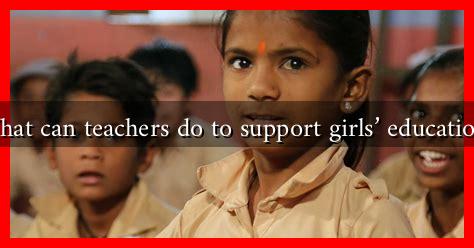-
Table of Contents
What Can Teachers Do to Support Girls’ Education?
Education is a fundamental right, yet millions of girls around the world face barriers that prevent them from accessing quality education. Teachers play a crucial role in bridging this gap and fostering an environment where girls can thrive academically and socially. This article explores effective strategies that educators can implement to support girls’ education, backed by research and real-world examples.
Understanding the Barriers to Girls’ Education
Before teachers can effectively support girls’ education, it is essential to understand the barriers they face. These barriers can be categorized into several key areas:
- Cultural Norms: In many societies, traditional gender roles prioritize boys’ education over girls’.
- Poverty: Families with limited resources may choose to invest in boys’ education, viewing it as a better return on investment.
- Safety Concerns: Girls often face threats of violence or harassment on their way to and from school.
- Lack of Female Role Models: A shortage of female teachers can discourage girls from pursuing education.
Creating an Inclusive Classroom Environment
Teachers can take proactive steps to create an inclusive classroom that encourages girls to participate and excel. Here are some strategies:
- Encourage Participation: Actively involve girls in discussions and group activities. Use techniques like random selection to ensure equal participation.
- Use Gender-Sensitive Language: Avoid language that reinforces stereotypes. Instead, use inclusive language that empowers all students.
- Promote Collaborative Learning: Foster teamwork through group projects that allow girls to work alongside their male peers, breaking down gender barriers.
Providing Mentorship and Role Models
Having access to mentors and role models can significantly impact girls’ educational journeys. Teachers can facilitate this by:
- Connecting Students with Female Mentors: Organize mentorship programs where girls can interact with successful women in various fields.
- Highlighting Female Achievements: Incorporate stories of influential women in the curriculum to inspire girls and show them what is possible.
- Encouraging Peer Support: Create buddy systems where older girls mentor younger ones, fostering a supportive community.
Addressing Safety and Well-Being
Safety is a significant concern for many girls, and teachers can play a vital role in ensuring a safe learning environment. Strategies include:
- Establishing Clear Policies: Implement and communicate policies against bullying and harassment, ensuring that all students feel safe.
- Creating Safe Spaces: Designate areas within the school where girls can gather and feel secure.
- Engaging Parents and Community: Involve parents and community leaders in discussions about the importance of girls’ education and safety.
Utilizing Technology and Resources
In today’s digital age, technology can be a powerful tool for enhancing girls’ education. Teachers can leverage technology by:
- Integrating Digital Learning: Use online resources and platforms to provide girls with access to additional learning materials.
- Encouraging STEM Participation: Promote interest in science, technology, engineering, and mathematics (STEM) fields through workshops and coding clubs.
- Accessing Global Networks: Connect students with global educational initiatives, such as Girls Who Code, to broaden their horizons.
Conclusion
Supporting girls’ education is not just a moral imperative; it is essential for societal progress. Teachers have the unique opportunity to influence the next generation by creating inclusive environments, providing mentorship, ensuring safety, and utilizing technology. By implementing these strategies, educators can help dismantle the barriers that hinder girls’ educational attainment, ultimately leading to a more equitable and prosperous future for all.
In summary, the role of teachers in supporting girls’ education is multifaceted and impactful. By understanding the challenges, fostering inclusivity, and leveraging resources, teachers can empower girls to pursue their educational dreams and contribute meaningfully to society.

